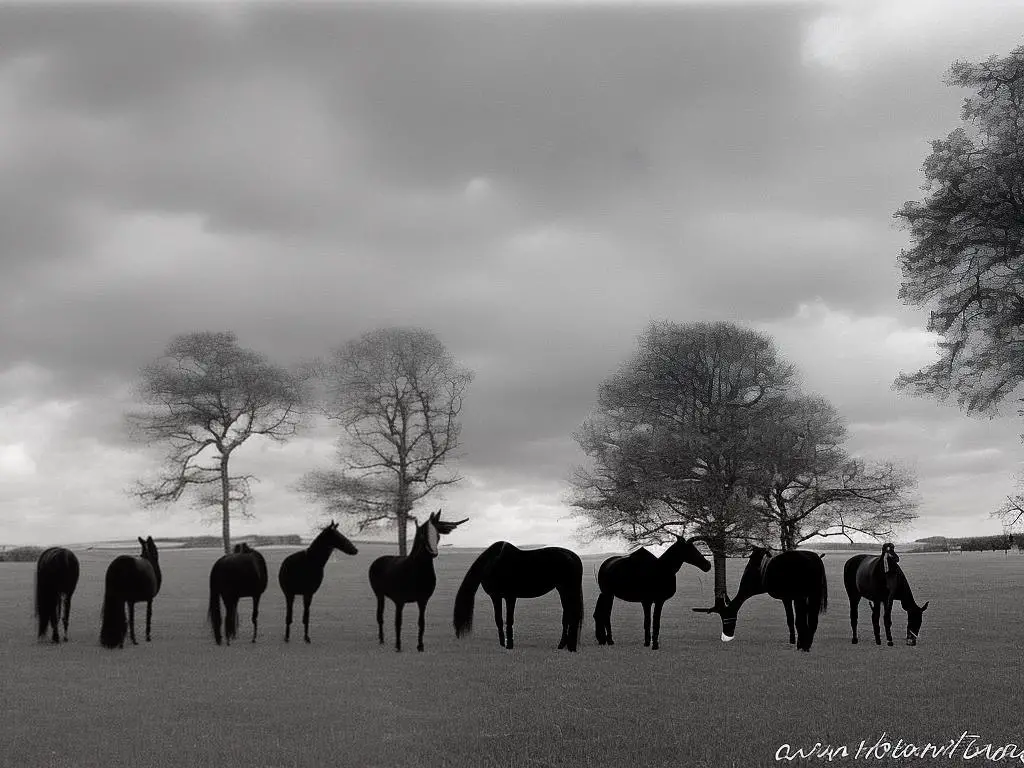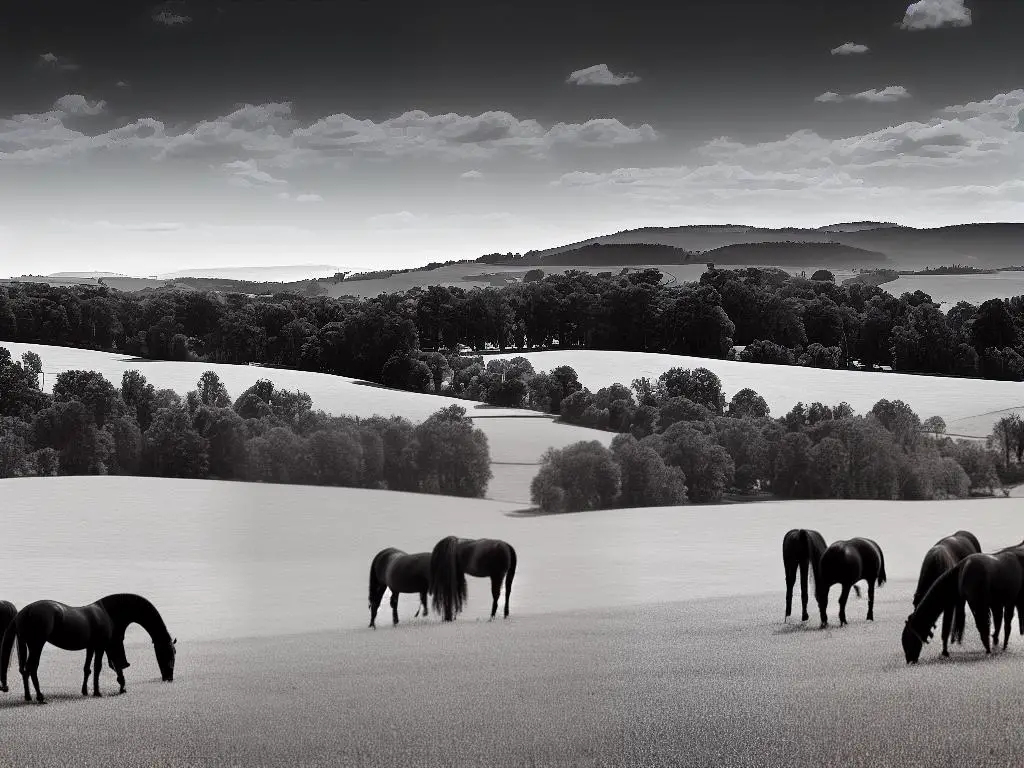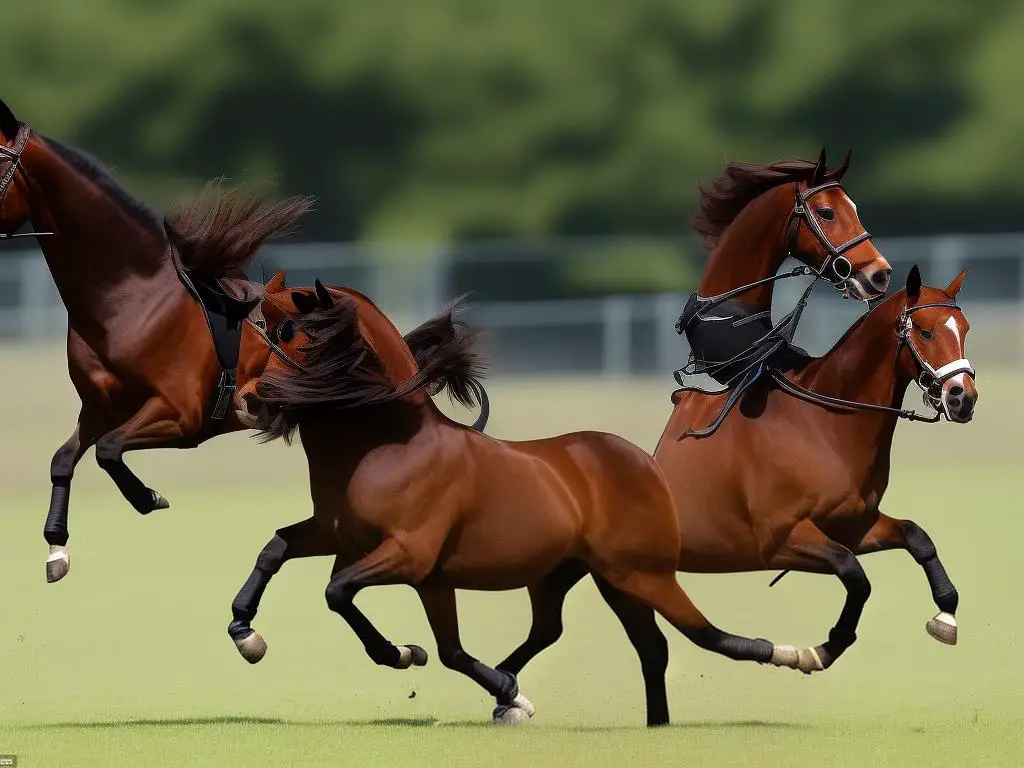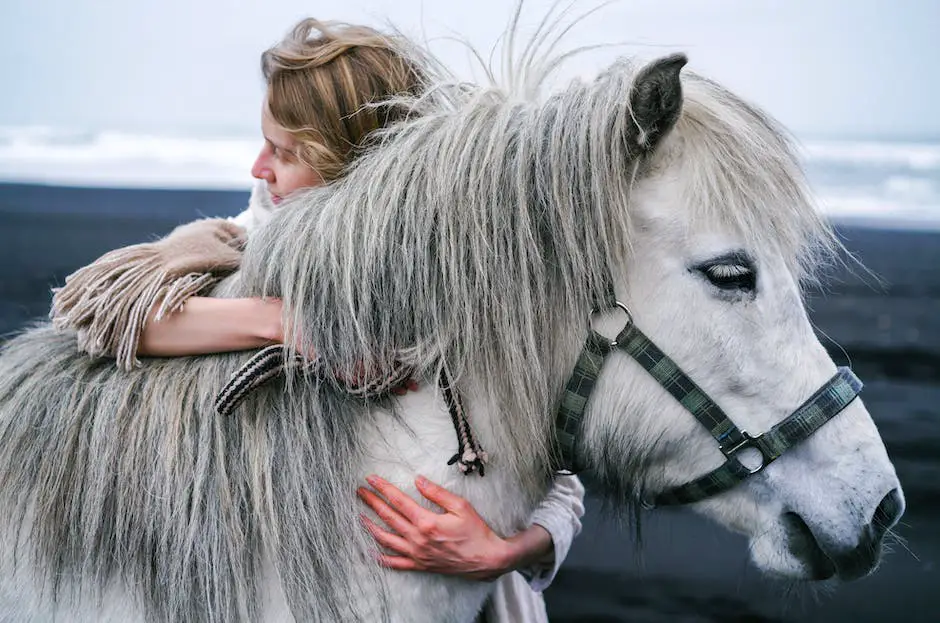German Warmbloods have long been admired for their elegance, versatility, and athleticism in the equestrian world. These horses have a rich and diverse history, with their roots tracing back to various European breeds and meticulous breeding practices. In this comprehensive guide, we delve into the fascinating world of German Warmbloods, examining their history and development, breeding and bloodlines, training and disciplines, health and nutrition, as well as the practical considerations of buying and owning these magnificent horses. By gaining a deeper understanding of these topics, we hope to provide prospective owners, enthusiasts, and general equestrian fans with a valuable resource to help them navigate the rewarding, yet complex, world of German Warmblood horse management.
Table of Contents (Horspedia)
History of German Warmbloods
History of German Warmbloods
German Warmbloods have a long, fascinating history that can be traced back to the Middle Ages. They have been bred in Germany for hundreds of years and are known for their excellent performance in various equestrian disciplines, such as dressage, show jumping, and eventing. Throughout their development, various selective breeding practices have been implemented to continually improve their athleticism, strength, and temperament.
In the early days, German horses were primarily used as warhorses, but as equestrian sports gained popularity, breeders turned their attention to more specialized purposes. They started crossing local, heavy-set breeds with various imported horses, such as Thoroughbreds, Spanish, and Arabian horses. These horse imports greatly influenced the overall development and refinement of the German Warmbloods we know today.
Breeding Practices
German Warmbloods benefit from a stringent breeding system in Germany. Breeders, owners, and trainers follow strict regulations and guidelines set forth by several regional breeding societies. These societies, including those of Hanoverians, Holsteiners, and Oldenburgs, act as governing bodies overseeing breeding practices and progression.
The societies use rigorous guidelines for the selection and approval of breeding stallions and mares. They require that a horse meet specific criteria regarding conformation, movement, temperament, and performance capabilities before it can be admissibly introduced into the breeding pool. This attention to detail ensures that the quality of Warmblood breeds is maintained and improved upon over time.
Horses that pass the strict evaluation process and obtain the necessary approvals are then carefully paired through a breeding system called “line breeding.” This breeding system involves mating related horses to concentrate desirable traits in their offspring while minimizing the risk of recessive genetic issues. By employing such diligent breeding practices, German Warmbloods have become exceptional sport horses that consistently produce top-performing offspring.
Types of German Warmbloods
There are several different types of German Warmbloods, with key differences among them. Three of the most well-known breeds include Hanoverians, Holsteiners, and Oldenburgs.
Hanoverians
Hanoverians have been bred in the region of Lower Saxony since the 16th century. As mentioned earlier, they originated as warhorses but later became renowned for their abilities in modern equestrian disciplines. Hanoverians have a predominantly Thoroughbred influence and are characterized by their elegant appearance, strong work ethic, and versatility.
Holsteiners
The Holsteiner breed originated in the northern German region of Schleswig-Holstein and is one of the oldest Warmblood breeds. Heavily influenced by Spanish, Neapolitan, and Thoroughbred bloodlines, Holsteiners are known for their natural ability in jumping. They have powerful hindquarters, compact bodies, and a constitutive bold front-end.
Oldenburgs
Oldenburgs boast origins in the northwestern German region of Lower Saxony. Oldenburg breeding has been heavily influenced by Thoroughbred and Trakehner bloodlines, resulting in athletic, powerful, and elegant horses. Oldenburgs have gained a reputation as dressage and show jumping specialists due to their exceptional movement and performance.
Introduction
German Warmblood horses, including well-known breeds such as Hanoverians, Holsteiners, and Oldenburgs, have a rich history of being bred for their grace, power, and athleticism. As a result, they continue to dominate various equestrian sports around the world. For those interested in raising these magnificent horses, it’s important to understand the intricate process of breeding and the role of specialized organizations in ensuring the quality and performance of these horses. Participating in the German Warmblood legacy is both rewarding and prestigious for equestrians worldwide.

Breeding and Bloodlines
Breeding Practices
Raising German Warmbloods involves adherence to strict guidelines to ensure the maintenance of their high-quality bloodlines and superior performance capabilities. The aim of breeding these horses is to uphold the heritage and value of their unique bloodlines while targeting improvement with each generation.
The process starts with breeders evaluating their current stock to determine which broodmares and stallions might be the best match for producing foals with the desired attributes. This involves assessing factors such as conformation, temperament, and physical abilities of the horses, along with evaluating potential stallions for their proven performance records and favorable genetic traits.
In Germany, specific organizations oversee the breeding of each warmblood breed, including the Hanoverian Verband for Hanoverians and the Oldenburg Verband for Oldenburgs, among others. These organizations hold yearly inspections and performance tests to evaluate the breeding potential of mares and stallions. Only those that pass these rigorous tests are allowed to breed and be registered within their respective registries.
Importance of Bloodlines
Bloodlines play a crucial role in determining the abilities and potential success of German Warmblood horses. A horse’s lineage can be traced back for many generations, allowing breeders to examine the performance and characteristics of its ancestors. By understanding a horse’s heritage, breeders can make informed decisions on selecting the best mating pairs to produce foals with the desired traits and abilities.
Some German Warmblood bloodlines have become famous for their ability to consistently produce top-performing offspring. Examples include the G-line from the Hanoverian breed, known for producing exceptional show jumpers, and the Donnerhall line for Oldenburg dressage horses. By carefully selecting breeding pairs, breeders can capitalize on desired traits in a horse’s bloodline to produce exceptional athletes.
Genetic Testing and Its Impact on Breeding Programs
Advancements in genetic testing have led to significant improvements in breeding practices for German Warmbloods. By examining the genetic makeup of a horse, breeders can identify potential health issues, such as inherited diseases, genetic mutations, and more. This allows for more informed decision-making when planning matings and can help avoid breeding horses with predispositions to certain conditions and hereditary issues.
In recent years, many warmblood breeds have started implementing mandatory genetic testing as part of their breeding regulations. For instance, the Hanoverian Verband now requires all breeding stallions to be tested and approved before they can be used for breeding services within the registry.
Genetic testing can also help breeders track and monitor specific desirable traits within bloodlines, such as coat color, leading to a more refined process of achieving specific attributes in future generations.
Besides, genetic testing can assist in determining parentage. Ensuring the accuracy of the bloodlines and the authenticity of pedigrees is crucial for maintaining the value and prestige of German Warmblood horses.
The Joy of Raising German Warmbloods
German Warmbloods are highly prized for their athleticism, versatility, and incredible temperaments, making them much sought-after in the world of competitive equestrian sports. Ensuring the continued success of this exceptional breed requires a commitment to responsible breeding practices, a respect for the importance of bloodlines, and an awareness of advancements in genetic testing. For anyone interested in raising German Warmbloods, understanding these core principles and actively participating in the ongoing efforts to maintain and enhance the breed’s qualities is of utmost importance. This dedication will not only uphold the legacy of these magnificent horses but also contribute to producing top-quality athletes capable of competing on the world stage for generations to come.

Training and Disciplines
Training Techniques for German Warmbloods
As both passionate and disciplined as they are, German Warmbloods require a thoughtful and structured training approach that cultivates their innate abilities across various equestrian disciplines. Achieving success in this endeavor requires patience, consistency, and age-appropriate training methods that lay a strong foundation for these captivating creatures.
Building trust and communication between horse and handler is crucial when training German Warmbloods. This relationship is fostered through groundwork, comprised of exercises teaching the horse to listen, respond, and respect their handler’s cues while on the ground. Examples of groundwork exercises include lunging, free-schooling, and in-hand work – all of which serve to establish open lines of communication before the horse is ridden.
With consistency at the forefront of training, German Warmbloods can clearly understand the expectations placed on them by their handlers. Their deep-rooted desire to please only makes it more efficient for them to learn when consistent messages are provided. Additionally, the incorporation of positive reinforcement – such as verbal praise or physical rewards like pats and scratches – can help forge a strong bond between horse and rider while encouraging the horse to perform at their very best.
Suitable Equestrian Disciplines for German Warmbloods
Traditionally bred for dressage, show jumping, and eventing, German Warmbloods are well-suited to a wide range of equestrian disciplines. They have a natural talent for dressage, with their powerful gaits, good balance, and willingness to learn. Many German Warmbloods have found success in high-level competitions, including the Olympics and the World Equestrian Games.
German Warmbloods also excel in show jumping, thanks to their powerful hindquarters, good scope, and natural athleticism. They are often seen competing successfully at the Grand Prix level.
Eventing is another discipline in which German Warmbloods often excel. Their intelligence, agility, and stamina make them well-suited to the demands of this challenging sport, which combines dressage, show jumping, and cross-country.
In addition to these disciplines, German Warmbloods can also perform well in other areas such as endurance riding, vaulting, and competitive trail riding. As an adaptable and versatile breed, they can make excellent partners in many different equestrian pursuits.
Age-Appropriate Training for German Warmbloods
When working with German Warmbloods, it is crucial to consider the horse’s age and physical development. Ensuring age-appropriate training practices are in place can help prevent injury and long-term health issues. This is essential for the well-being of these horses.
Typically, young German Warmbloods begin their training with groundwork around the age of two. Basic round pen work or long-lining is employed to encourage proper movement and balance. As the horse turns three years old, they can start to be introduced to a rider, focusing on short, gentle rides that emphasize balance and rhythm.
As the German Warmblood matures and grows stronger, training sessions can gradually become more intense and intricate. A focus on technique and discipline-specific skills can be introduced over time. Nonetheless, it is vital to monitor the horse and adjust the training program as needed. This ensures they are not overworked or pushed beyond their physical capabilities.

Health and Nutrition
Dietary Requirements for German Warmbloods
Like all horses, German Warmbloods require a balanced diet to maintain optimal health and performance. The main components of their diet include forage, concentrates, and water. Forage, provided through hay or pasture, should make up the majority of their diet, ideally accounting for 1.5-2% of the horse’s body weight per day.
It is essential to adjust the amount and type of concentrates based on the horse’s unique needs. Factors such as age, workload, metabolism, and overall health determine the appropriate concentrate intake. In general, a high-quality grain mix or pelleted feed will provide the necessary nutrients for a German Warmblood. Keep in mind, it is important to divide these concentrates into several smaller, frequent meals to prevent digestive issues.
German Warmbloods also require essential minerals and vitamins to maintain good health. Most of these nutrients can be found in high-quality forage and commercial feeds. However, if a horse’s specific nutritional needs aren’t met through forage and feed alone, a mineral or vitamin supplement may be necessary.
Lastly, ensuring access to a consistent supply of clean, fresh water is essential for a German Warmblood’s health. An adult horse may consume anywhere from 5 to 15 gallons of water per day, depending on factors such as climate, workload, and diet.
Common Health Concerns in German Warmbloods
German Warmbloods are generally considered a healthy breed, but there are a few conditions that they are predisposed to developing. These include:
- Osteochondrosis Dissecans (OCD) – A developmental bone disease where cartilage fails to properly mature into bone, resulting in joint pain and stiffness. Early detection and treatment, such as proper nutrition, exercise, and possibly surgery, are crucial in minimizing the long-term impact of OCD on a horse’s performance and well-being.
- Wobblers Syndrome – A neurological disorder caused by compression of the spinal cord in the neck, leading to coordination issues and weakness in the limbs. Early diagnosis and treatment, which may involve medical management or surgical intervention, can significantly improve a horse’s prognosis.
- Tying-Up Syndrome – This is a muscle disorder that causes muscle stiffness, pain, and potentially lasting damage. A proper exercise routine, diet adjustments (particularly reducing starch and sugar intake), and stress management can minimize the risk of an episode.
Preventive Care Measures for German Warmbloods
- Regular veterinary examinations – Routine check-ups allow for early detection and treatment of any health issues. These examinations should include dental care, deworming, and vaccinations.
- Proper hoof care – A well-maintained hoof is crucial for overall health and performance. German Warmbloods should have their hooves trimmed and checked by a professional farrier every 6 to 8 weeks.
- Grooming and skin care – Regular grooming helps to maintain a healthy coat and skin, as well as providing an opportunity for early detection of potential skin irritations or injuries.
- Exercise and conditioning – A consistent and appropriate exercise routine is vital for maintaining a German Warmblood’s mental and physical well-being. The exercise program should be tailored to the individual horse’s needs, taking into account factors such as age, fitness, and intended discipline.
- Proper nutrition – A well-balanced diet that meets the specific needs of a German Warmblood in terms of age, workload, and overall health is paramount for maintaining their welfare and ensuring optimal performance in their desired discipline.
By taking a proactive approach to your German Warmblood’s health and nutrition, you can ensure that they have the best possible foundation for a successful and fulfilling life. Remember that every horse is unique, and adjustments to care and diet may be necessary to meet their individual needs. Consult your veterinarian or equine nutritionist for personalized guidance and recommendations.

Buying and Ownership
Understanding German Warmbloods
As you begin your journey into raising German Warmbloods, it’s crucial to understand their characteristics and qualities. German Warmbloods are a popular choice of horse for equestrians who are involved in dressage, show jumping, and eventing. These versatile horses are known for their athleticism, intelligence, and trainability. Originating from Germany, Warmbloods are categorized into several breeds such as the Hanoverian, Oldenburg, and Westphalian. When looking into purchasing and raising a German Warmblood, there are some key factors to consider, including selection, financial investment, and successful ownership tips. With proper care, nutrition, and management as outlined in the previous paragraph, you are well on your way to raising a happy and healthy German Warmblood.
Selecting the Right Horse
When searching for the perfect German Warmblood, it is important to consider factors such as the horse’s age, training, temperament, and conformation. Each of these aspects will play a significant role in how the horse will adapt to its new environment and perform in competitions.
- Age: Younger horses may be less expensive initially, but will require more training, patience, and time commitment. Older, more experienced horses will likely have higher upfront costs but require less training and be ready to compete sooner.
- Training: Evaluate the horse’s current level of training and determine if it matches the level of competition you intend to pursue. Make sure to consider the amount of time and resources you are willing to invest in training.
- Temperament: Choose a horse with a temperament that is well-suited for your riding abilities. A calm and patient horse is more suitable for a beginner rider, while a more spirited and energetic horse may be better suited for advanced riders.
- Conformation: It is crucial to inspect the horse’s conformation, or physical appearance, including its bones, muscles, and overall balance. Poor conformation may lead to health and performance issues down the line.
Financial Investment
Purchasing a German Warmblood can be a significant financial investment. The cost of a Warmblood will vary depending on factors such as lineage, age, training, and overall health. Prices can range anywhere from $10,000 to $100,000 or more. It is important to have a realistic understanding of the financial commitment involved in horse ownership and to create a budget for the initial purchase as well as ongoing costs.
Ongoing costs to keep in mind include:
- Feed and stable boarding
- Routine veterinary care and vaccinations
- Farrier services (horses need regular hoof care)
- Training and competition fees
- Riding equipment and tack, such as saddles, bridles, and protective gear
- Horse insurance
Tips for Successful Ownership
- Develop a strong relationship with your horse through regular interaction, training, and grooming. This will build trust and make your horse more willing to work with you.
- Keep your horse’s living space clean and well-maintained. Providing a comfortable, safe environment for your horse will help keep them healthy and happy.
- Stay up-to-date on your horse’s veterinary care, including vaccinations, dental check-ups, and regular assessments for any signs of illness or discomfort.
- Invest in professional training, both for you and your horse. Even if you plan on training your horse yourself, seeking guidance from an experienced equestrian can help you develop better training techniques and avoid potential pitfalls.
- Be patient and enjoy the process. Raising, training, and competing with a German Warmblood can be a rewarding and fulfilling experience that takes time and dedication. Whether your horse becomes a world-class competitor or simply a beloved companion, the key to successful horse ownership is enjoying and embracing the journey.

As we explored the captivating world of German Warmbloods, we learned about their storied history, the importance of strong bloodlines and breeding practices, the wide range of disciplines suited to these talented horses, and the essential elements of maintaining their health and proper nutrition. Furthermore, we discussed the intricacies of buying and owning a German Warmblood, providing a solid foundation for those considering embarking on this journey. Armed with this comprehensive knowledge, both novices and experienced horse enthusiasts can navigate the various aspects of German Warmblood ownership, ultimately allowing them to thrive alongside these beautiful and versatile animals.
